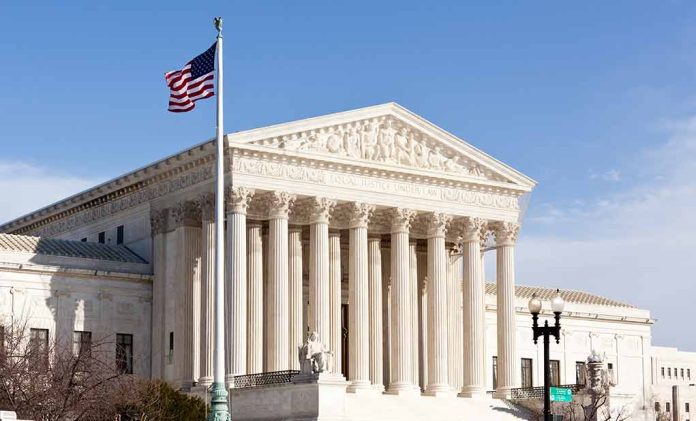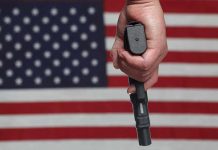
The Supreme Court’s conservative majority has upheld Biden administration rules regulating “ghost guns,” delivering an unexpected win for the White House’s efforts to combat untraceable firearms.
Key Takeaways
- The Supreme Court ruled 7-2 to uphold regulations requiring ghost gun kits to include serial numbers and subject buyers to background checks.
- Justice Neil Gorsuch wrote the majority opinion, joined by both conservative and liberal justices, while Justices Thomas and Alito dissented.
- Ghost gun recoveries at crime scenes increased dramatically from fewer than 1,700 in 2017 to 27,000 in 2023.
- Since the federal rule was implemented in 2022, ghost gun recoveries have stabilized or decreased in major cities.
- The case focused on ATF’s regulatory authority rather than Second Amendment rights.
Supreme Court’s Surprising Decision
In a surprising 7-2 decision, the Supreme Court ruled to uphold the Biden administration’s regulations on “ghost guns” – weapons that are assembled at home from kits and lack serial numbers. Justice Neil Gorsuch wrote the majority opinion, joined by Chief Justice John Roberts and Justices Sonia Sotomayor, Elena Kagan, Brett Kavanaugh, Amy Coney Barrett, and Ketanji Brown Jackson. The regulations, which have been in effect since August 2022, require that kits capable of being turned into functional guns must come with serial numbers, and their buyers must undergo federal background checks.
Justice Gorsuch acknowledged in the majority opinion that while “some home hobbyists enjoy assembling them. But criminals also find them attractive.” The ruling allows the Bureau of Alcohol, Tobacco, Firearms and Explosives (ATF) to regulate weapon parts kits and unfinished frames or receivers under the 1968 Gun Control Act, which was revised in 2022 to specifically address “buy build shoot” kits. This decision comes as law enforcement has increasingly recovered these untraceable weapons at crime scenes.
Rising Criminal Use of Ghost Guns
The ruling addresses a significant public safety concern, as ghost guns have become increasingly popular among criminals seeking untraceable firearms. Law enforcement seized over 19,000 ghost guns in 2021, with the number found at crime scenes skyrocketing from fewer than 1,700 in 2017 to 27,000 in 2023. These privately manufactured firearms have been implicated in high-profile crimes, including a mass shooting in Philadelphia and the murder of UnitedHealthcare’s CEO in Manhattan.
Since the implementation of the federal rule, data shows the number of ghost guns has stabilized or decreased in major cities like New York, Los Angeles, Philadelphia, and Baltimore. The manufacturing of miscellaneous gun parts has reportedly dropped by 36% overall, suggesting the regulations are having their intended effect. The administration has emphasized it is not banning these kits outright, but rather requiring them to comply with the same regulations that apply to commercial firearms.
Dissenting Opinions and Legal Challenge
Justices Clarence Thomas and Samuel Alito dissented from the majority opinion. Thomas wrote that the Court “blesses the government’s overreach based on a series of errors” and argued that “Congress could have authorized ATF to regulate any part of a firearm or any object readily convertible into one, But, it did not. I would adhere to the words Congress enacted.” The dissenters contended that the majority’s interpretation invites “unforeseeable consequences and offers no limiting principle.”
The legal challenge, Garland v. VanDerStok (23-852), was brought by individuals and groups associated with gun rights and ghost gun manufacturing after a federal appeals court had previously struck down the updated rules. Gun rights advocates argued the rule is unconstitutional, claiming ghost gun kits are “non-firearm objects” that shouldn’t be subject to such regulations. Importantly, the case focused on the ATF’s regulatory authority rather than addressing Second Amendment rights directly.
Regulatory Impact and Future Implications
The ATF’s rule specifically requires unfinished firearm parts to be treated like completed firearms, necessitating licenses and serial numbers. Manufacturers must run background checks before selling these parts, adding a layer of accountability that previously didn’t exist. While the ruling represents a significant victory for the Biden administration’s gun control efforts, it’s worth noting that a future Trump administration could potentially seek to rescind the rule.
This decision comes during a period when the Supreme Court has revisited the Second Amendment with mixed rulings on gun regulations. In recent years, the Court has expanded individual gun rights, including striking down a federal ban on bump stocks. However, this latest ruling suggests that even a conservative-majority Court recognizes the government’s authority to regulate items that can be easily converted into firearms, especially when there’s evidence they’re increasingly being used in violent crimes.
Sources:
- Supreme Court upholds Biden admin ‘ghost gun’ regulation
- Supreme Court upholds Biden regulations on ‘ghost gun’ kits
- Supreme Court upholds Biden’s ghost gun rule requiring serial numbers and background checks







